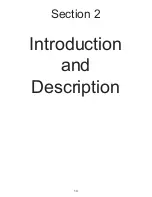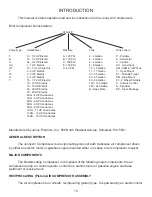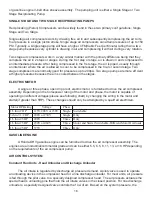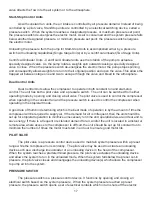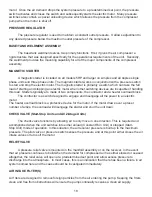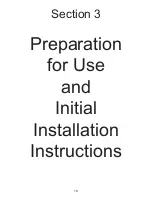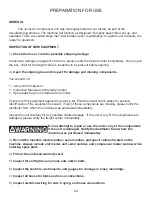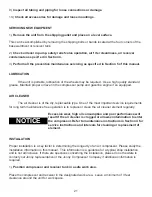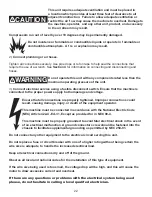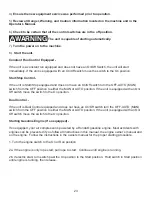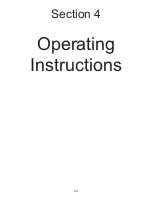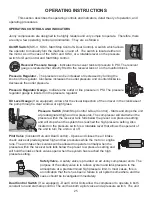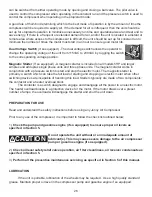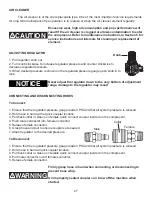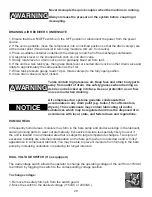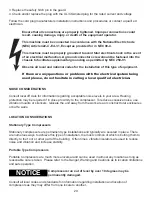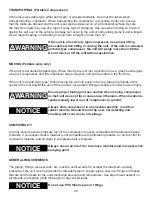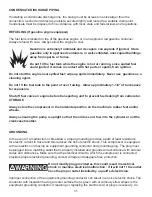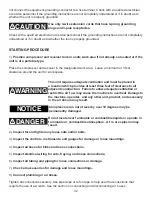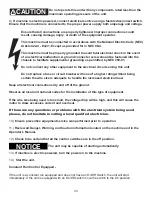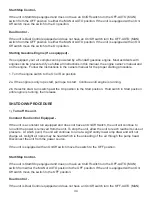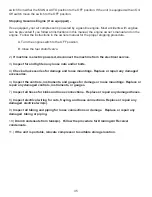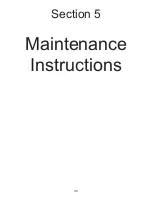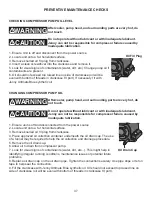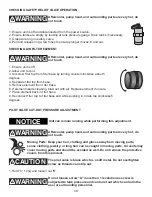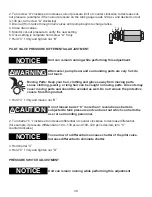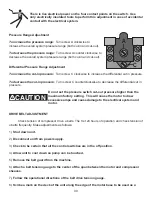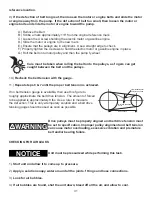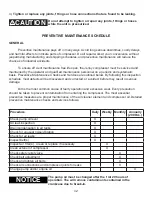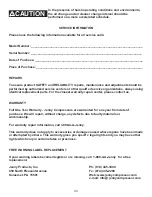
28
Never decouple the quick coupler when the machine is running.
Always release the pressure in the system before coupling or
decoupling.
DRAINING AIR RECEIVER CONDENSATE
1. Ensure that the ON/OFF switch is in the OFF position or disconnect the power from the power
source.
2. If the unit is portable, move the compressor into an inclined position so that the drain valve(s) are
at the lowest point (this will assist in removing moisture, dirt, etc. from tanks)
3. Place a suitable container underneath the drain(s) to catch all of the discharge condensate.
4. Grasp black lever or the knurled drain cock on one drain valve.
5. Slowly rotate lever or drain cock so as to gradually bleed air from tank.
6. If the unit is a twin tank type, then grasp black lever or knurled drain cock on other drain valve and
rotate to approximately the same position as the f rst.
7. When tank pressure gauge reads 10 psi, rotate valve(s) to the fully open position.
8. Close drain valve(s) when f nished.
Tanks contain high pressure air. Keep face and other body parts
away from outlet of drain. Use safety glasses when draining as
debris can be kicked up into face. Use ear protection as air f ow
noise is loud when draining.
All compressed air systems generate condensate that
accumulates in any drain point (e.g. tanks, f lter, aftercoolers,
dryers). This condensate may contain lubricating oil and/or
substances which may be regulated and must be disposed of in
accordance with local, state, and federal laws and regulations.
HUMID AREAS
In frequently humid areas, moisture may form in the bare pump and produce sludge in the lubricant,
causing running parts to wear out prematurely. Excessive moisture is especially likely to occur if
the unit is located in an unheated area that is subject to large temperature changes. Two signs of
excessive humidity are external condensation on the bare pump when it cools down and a “milky”
appearance in compressor lubricant. You may be able to prevent moisture from forming in the bare
pump by increasing ventilation or operating for longer intervals.
DUAL VOLTAGE SWITCH (If so equipped)
The dual voltage switch allows the operator to change the operating voltage of the unit from 115VAC
to 230VAC by toggling the switch to the corresponding voltage position.
To change voltage:
1. Remove the safety hitch pin from the switch guard.
2. Move the switch to the desired voltage (115VAC or 230VAC).
NOTICE
!
WARNING
!
WARNING
Содержание Reciprocating Air Compressors
Страница 4: ...4 Section 1 Safety and Health Instructions...
Страница 14: ...14 Section 2 Introduction and Description...
Страница 19: ...19 Section 3 Preparation for Use and Initial Installation Instructions...
Страница 24: ...24 Section 4 Operating Instructions...
Страница 36: ...36 Section 5 Maintenance Instructions...
Страница 44: ...44 Section 6 Troubleshooting Instructions...

